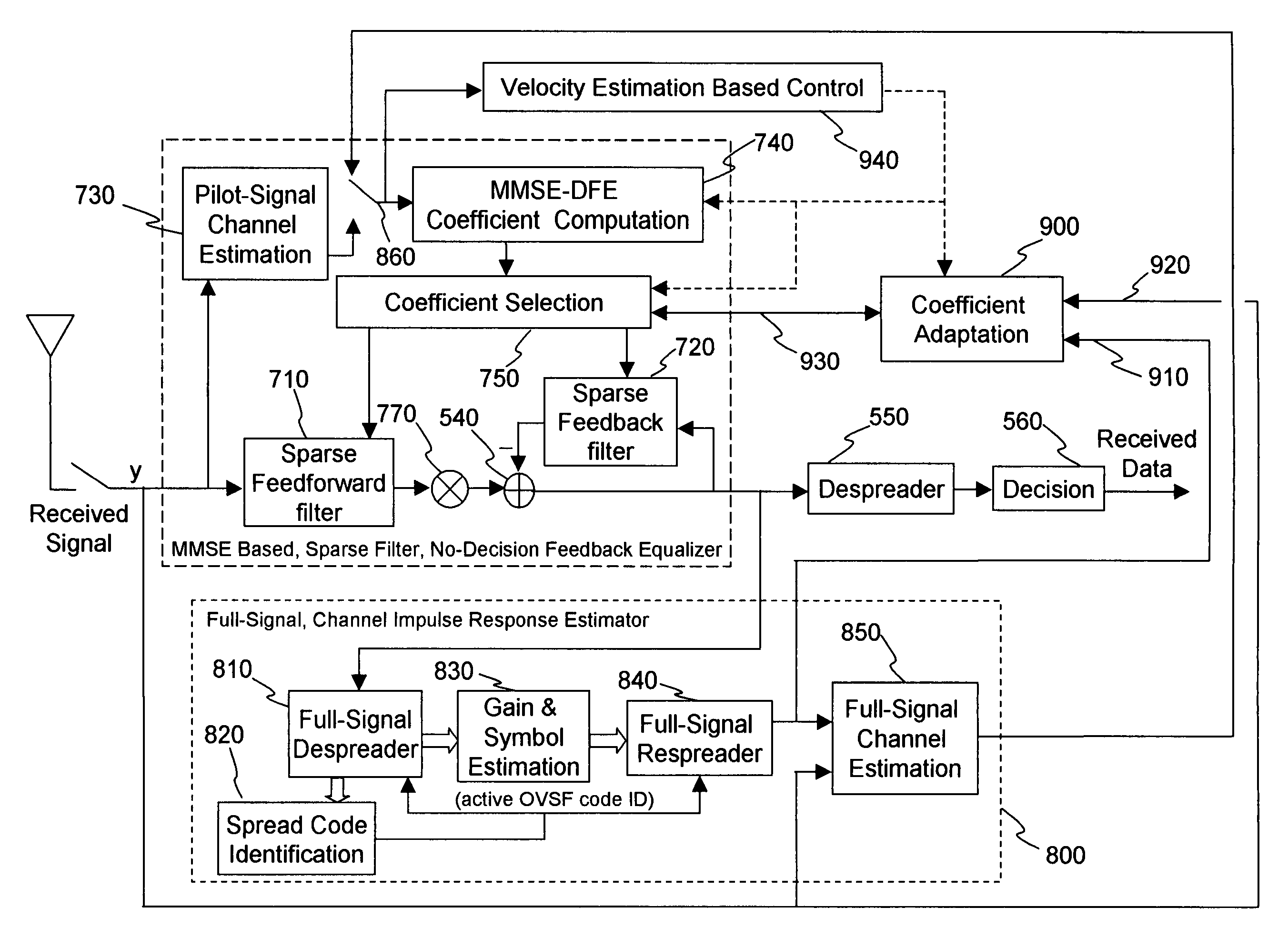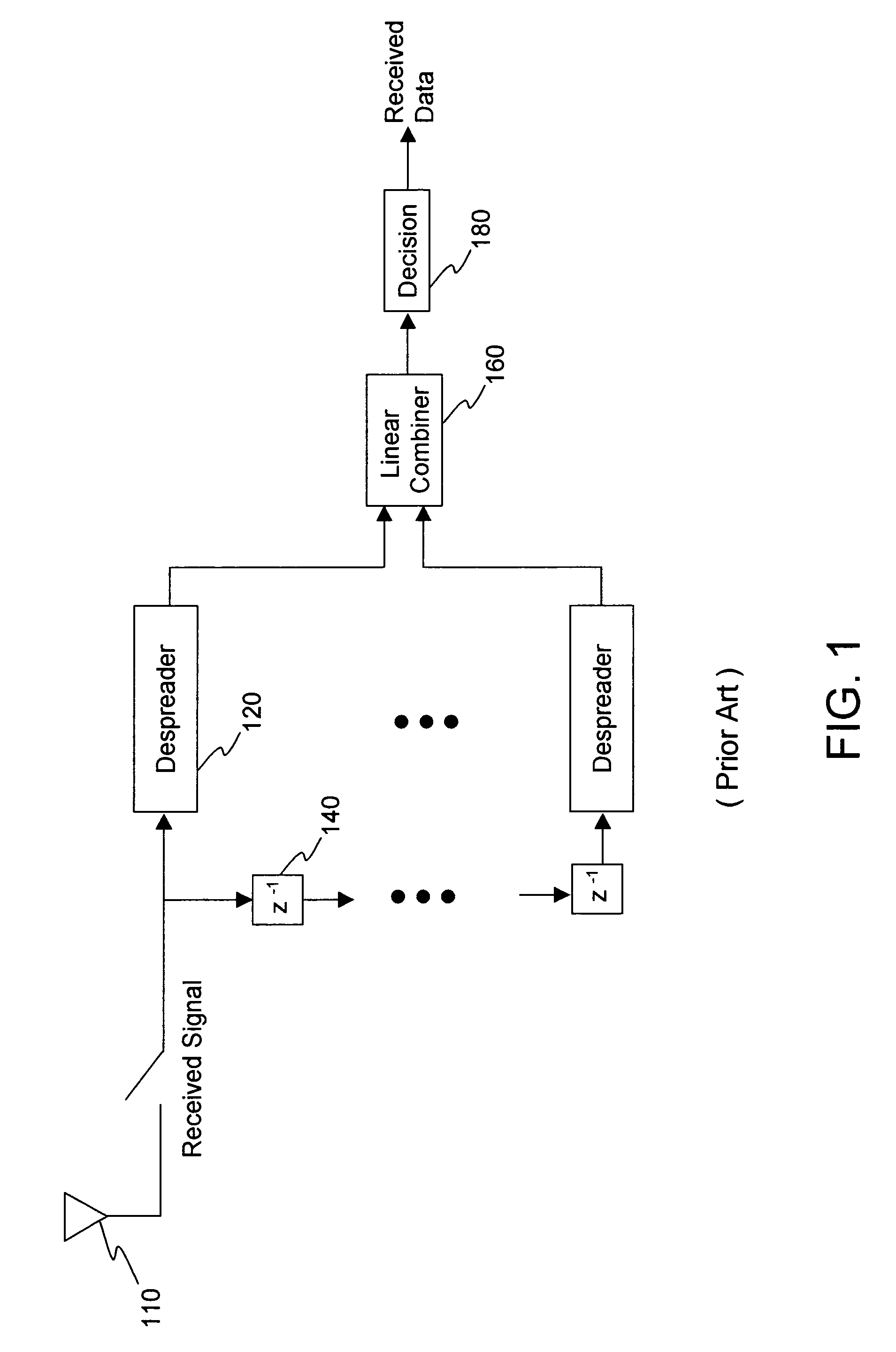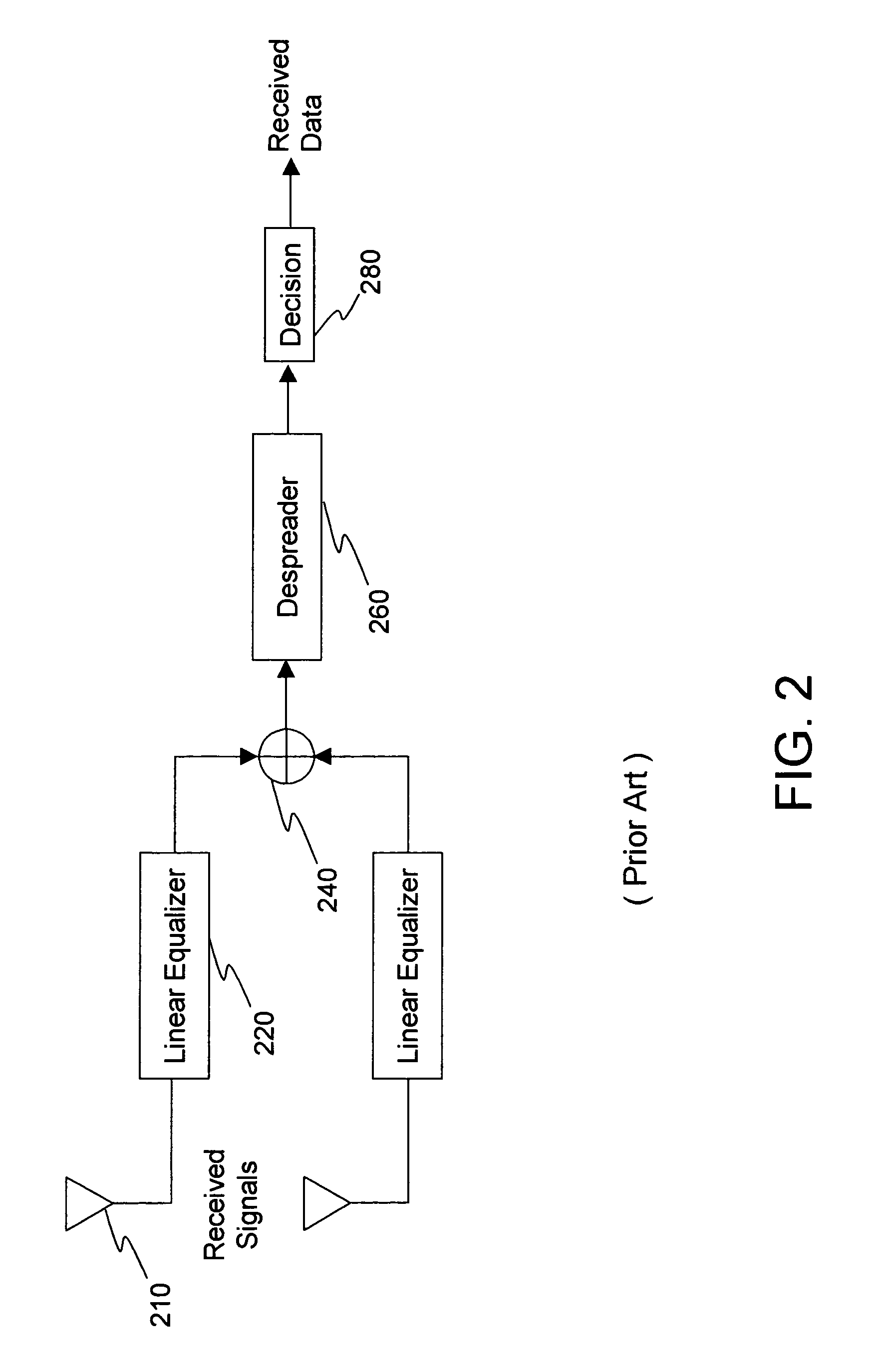Method and apparatus for a chip-level no-decision feedback equalizer for CDMA wireless systems
a wireless system and nodecision feedback technology, applied in the field of method and apparatus for a nodecision feedback equalizer for cdma wireless systems, can solve the problems of electrical power consumption, large area of integrated electronic circuits, etc., and achieve the effects of saving resources on handset receivers, reducing complexity, and reducing the number of transistors
- Summary
- Abstract
- Description
- Claims
- Application Information
AI Technical Summary
Benefits of technology
Problems solved by technology
Method used
Image
Examples
Embodiment Construction
[0027]FIG. 5 shows a block diagram of certain processes performed by a system implementing a chip-level no-decision feedback equalizer (NDFE) 500 in a CDMA receiver. The performance of the chip-level NDFE receiver for the 3 G CDMA downlink signals is such that a handset application requires only a single antenna 510. The received signal is optimally sampled at the chip-rate to form the input y to the feedforward filter 520. The chip rate outputs of the feedforward filter 520 and the feedback filter 530, y_FF and y_FB, respectively, are differentially combined by summation element 540 to form the NDFE output, z=y_FF−y_FB. Note that the differential combiner output z is directly fed back as input to the feedback filter 530, without an intervening non-linear decision element. The feedforward filter, feedback filter and differential combiner form the NDFE that is identified in FIG. 5 and that is structurally an IIR linear filter with input y and output z. The NDFE output z is input to a...
PUM
 Login to View More
Login to View More Abstract
Description
Claims
Application Information
 Login to View More
Login to View More - R&D
- Intellectual Property
- Life Sciences
- Materials
- Tech Scout
- Unparalleled Data Quality
- Higher Quality Content
- 60% Fewer Hallucinations
Browse by: Latest US Patents, China's latest patents, Technical Efficacy Thesaurus, Application Domain, Technology Topic, Popular Technical Reports.
© 2025 PatSnap. All rights reserved.Legal|Privacy policy|Modern Slavery Act Transparency Statement|Sitemap|About US| Contact US: help@patsnap.com



